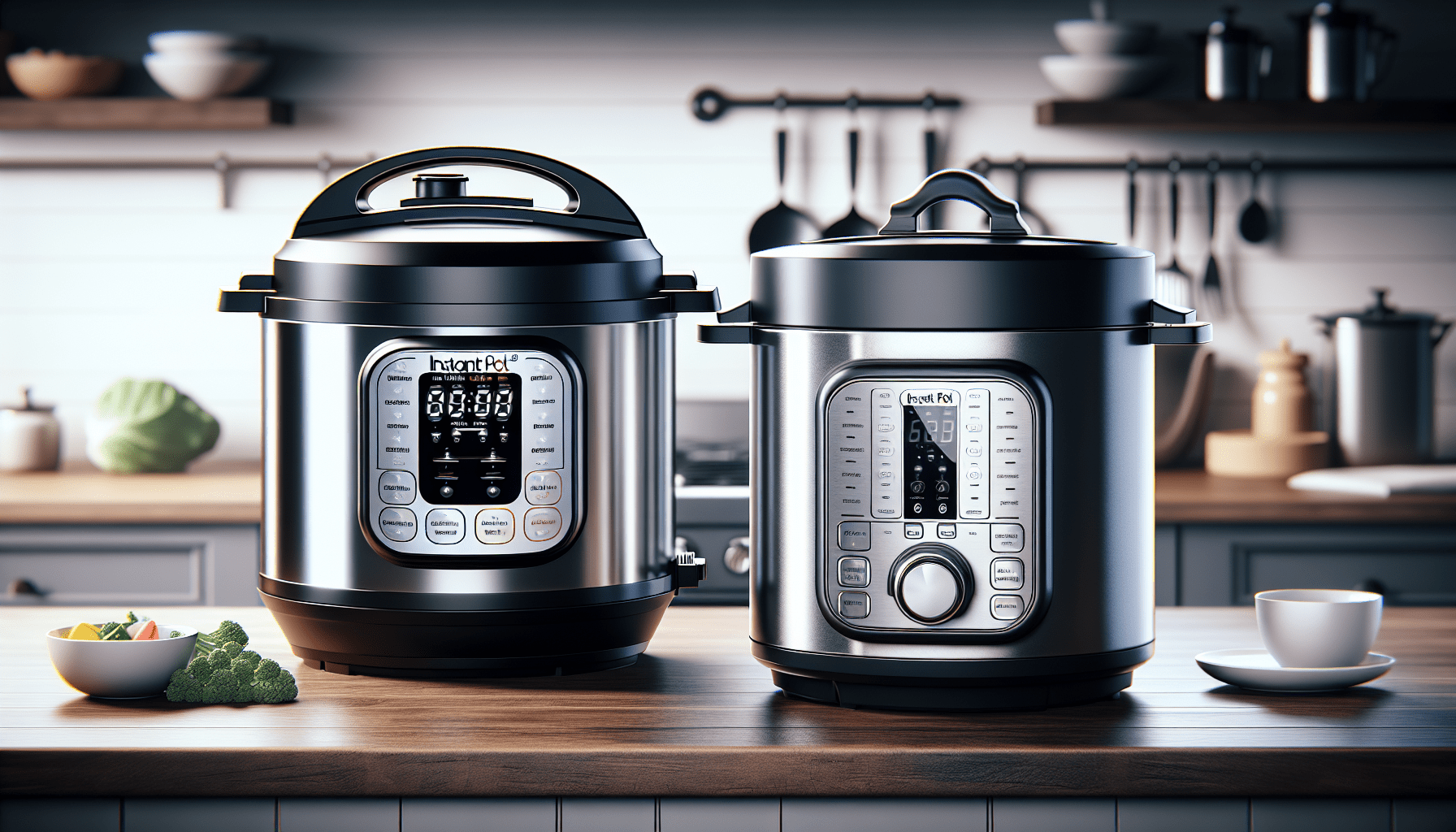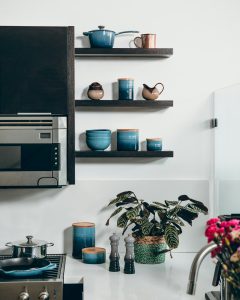Welcome, fellow kitchen enthusiasts! Today, we dive into the spirited debate of “Instant Pot vs Stovetop Pressure Cooker.” Both appliances promise to revolutionize our cooking experiences, but which one truly reigns supreme in our kitchens? We’ll explore the unique features, advantages, and potential drawbacks of each, helping us make an informed decision on which tool best suits our culinary needs and lifestyle. Let’s unravel the mysteries of these modern cooking marvels and discover how they can enhance our meal prep adventures together. Ever found yourself torn between using an Instant Pot versus a traditional stovetop pressure cooker? If so, you’re not alone! Many of us grapple with decisions like these when trying to find the perfect solution for our cooking needs. In this friendly guide, we’ll delve deep into the differences and similarities between these two popular kitchen appliances, exploring their pros and cons, functionalities, and best-use scenarios.

Introduction
In today’s culinary world, pressure cooking has gained immense popularity for its ability to prepare meals quickly while retaining nutrition and flavor. Two primary types of pressure cookers dominate the market: the Instant Pot and the traditional stovetop pressure cooker. Each has its own unique features, strengths, and drawbacks that can make deciding between the two quite a challenge. Let’s dive in and explore what makes each one tick!
What is an Instant Pot?
The Instant Pot is a smart electric pressure cooker that combines various cooking technologies in one device. It’s designed to be user-friendly and offers a multitude of functions beyond just pressure cooking.
Key Features of the Instant Pot
The versatility of the Instant Pot is one of its major selling points. Here’s a breakdown of what makes it stand out:
Functionality:
- Multifunctionality: Most Instant Pot models can also serve as a slow cooker, rice cooker, steamer, sauté pan, and yogurt maker.
- Preset Programs: Convenient pre-programmed settings for different types of meals make it easy to cook a variety of dishes with minimal effort.
- Timer and Delay Start: Features like delay start and automatic keep-warm settings give us flexibility, allowing for food prep ahead of time.
Safety:
- Safety Mechanisms: The Instant Pot usually comes with built-in safety features, including pressure and temperature control, automatic shut-off, and lid lock mechanisms.
Ease of Use:
- User-Friendly Interface: Digital controls and a straightforward interface make it easier for even beginners to use.
- Hands-Off Cooking: Set it and forget it; the Instant Pot doesn’t need to be monitored continuously.
Pros and Cons of the Instant Pot
Let’s take a look at the strengths and weaknesses of the Instant Pot to provide a clearer picture of its overall value.
| Pros | Cons |
|---|---|
| Simplifies cooking with preset functions | Larger footprint compared to stovetop models |
| Multiple functionalities reduce the need for other kitchen appliances | Generally more expensive |
| User-friendly and safe for beginners | Sometimes inconsistent results with certain recipes |
| Energy-efficient | Relies on electricity, so not ideal for power outages |
What is a Stovetop Pressure Cooker?
The stovetop pressure cooker, on the other hand, is a traditional kitchen appliance that uses the heat from a stove to create high-pressure cooking conditions. While it may seem simpler, it’s a powerful and highly efficient tool.
Key Features of the Stovetop Pressure Cooker
Traditional stovetop pressure cookers have their own unique advantages, often providing a different set of features compared to electric models.
Functionality:
- High Pressure Levels: Stovetop pressure cookers can reach higher pressure levels, cooking food faster.
- Durability: Typically made from durable materials like stainless steel, they can last for many years.
- Control: Offers more manual control over the cooking process.
Versatility:
- Variety of Uses: Beyond pressure cooking, they can be used for other cooking methods like steaming and boiling.
- Adaptability: Can be used on different heat sources, including gas, electric, and induction stoves.
Cost-Efficiency:
- Lower Cost: Generally more affordable than an Instant Pot.
- No Electricity Required: Ideal for those in areas prone to power outages or who prefer not to rely on electric appliances.
Pros and Cons of the Stovetop Pressure Cooker
To get a comprehensive view, let’s consider the benefits and drawbacks of using a stovetop pressure cooker.
| Pros | Cons |
|---|---|
| Can reach higher pressure levels for faster cooking | Requires active monitoring and control |
| Typically more affordable | Can be intimidating for beginners due to manual controls |
| Doesn’t rely on electricity | Fewer multifunctional features |
| Highly durable construction | Higher risk of safety issues if not used properly |
Performance Comparison: Instant Pot vs Stovetop Pressure Cooker
Now that we’ve covered the basics, let’s get into the nitty-gritty: how do these devices compare in terms of performance?
Cooking Speed
Both tools excel in speeding up the cooking process, but they do so in different ways.
- Instant Pot: While it has various cooking settings, it generally reaches lower pressure levels than a stovetop model. This can sometimes mean slightly longer cooking times.
- Stovetop Pressure Cooker: Capable of reaching higher pressures more quickly, it often shaves off precious minutes from cooking times.
Consistency of Results
Achieving consistent cooking results is crucial for any kitchen appliance.
- Instant Pot: Often provides consistent results, especially with its pre-programmed settings calibrated for specific types of food.
- Stovetop Pressure Cooker: While also reliable, it requires manual adjustments and more hands-on attention, which can introduce variability into the results.
User Experience and Interface
Ease of use can make or break our relationship with a kitchen appliance.
- Instant Pot: The digital interface with preset programs makes it easy to use, even for those new to pressure cooking.
- Stovetop Pressure Cooker: Requires more manual intervention and experience, making it potentially more challenging for beginners but preferred by those who value control.
Safety
Safety is a paramount concern when working with high pressure.
- Instant Pot: Equipped with numerous safety features, making it a safer option for families and beginners.
- Stovetop Pressure Cooker: While generally safe, it does require more knowledge and attention to use properly, posing a slightly higher risk if misused.
Versatility
The range of functions an appliance offers can determine its overall value and usability.
- Instant Pot: Wins hands down in versatility with its ability to replace several other kitchen gadgets.
- Stovetop Pressure Cooker: Though versatile in its own right, it doesn’t offer the same range of functionalities without additional accessories or manual adjustments.

Ideal Use Cases
Given the streaks and quirks of each, when should one opt for an Instant Pot, and when to pick a stovetop pressure cooker?
When to Use an Instant Pot
- Busy Schedules: Perfect for quick, hands-off meals that don’t require constant supervision.
- Multifunctionality: Ideal if we’re looking to streamline our kitchen gadgets, consolidating other devices like slow cookers and rice makers.
- Safety: Great for families or those new to pressure cooking who prioritize safety features and ease of use.
When to Use a Stovetop Pressure Cooker
- Experienced Cooks: Best for those who feel comfortable with more manual control and adjustments during cooking.
- Speed: A better option when fastest cooking times are required, as it can reach higher pressures swiftly.
- Durability: Suited for those who want a long-lasting, low-maintenance option that doesn’t rely on electricity.
Making the Right Choice
Choosing between an Instant Pot and a stovetop pressure cooker boils down to our specific needs and cooking style. Here are some considerations to help make that choice:
Budget
- Instant Pot: Typically more expensive due to its multifunctionality and built-in technology.
- Stovetop Pressure Cooker: Generally more budget-friendly, especially high-quality models.
Kitchen Space
- Instant Pot: Takes up more counter space but can replace multiple other appliances.
- Stovetop Pressure Cooker: Easier to store and requires less kitchen space.
Cooking Habits
- Instant Pot: Opt for this if we prefer convenience, automation, and have varied cooking needs.
- Stovetop Pressure Cooker: Choose this if we enjoy more hands-on cooking and don’t mind manual adjustments.

Conclusion
In summary, both the Instant Pot and the stovetop pressure cooker have their unique advantages and limitations. The right choice depends on our lifestyle, budget, kitchen space, and cooking preferences.
- For those who value convenience, safety, and multifunctionality, the Instant Pot is a fantastic choice.
- For those who prefer control, faster cooking times, and durability, the traditional stovetop pressure cooker might be the better option.
Ultimately, both are incredible tools that can revolutionize our cooking experience by offering different paths to delicious, nutrient-rich meals. Whether you opt for the modern convenience of an Instant Pot or the reliable efficiency of a stovetop pressure cooker, happy cooking is just a pressurized moment away!




